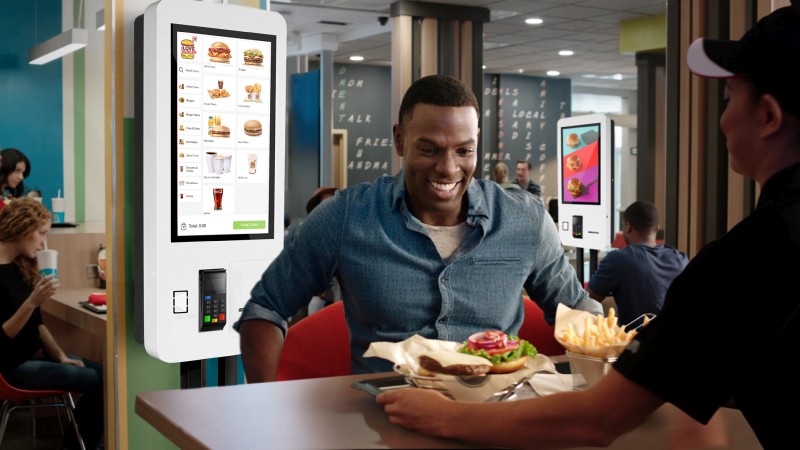Understanding EPOS Systems: A Comprehensive Guide for Hospitality and Leisure Businesses
Running a hospitality or leisure business and still juggling receipts and manual entries? There’s a smarter way. The EPOS system, or Electronic Point of Sale, might just be the game-changer you need. Imagine streamlining your operations, boosting sales, and enhancing customer satisfaction with just a few taps. Curious about the benefits of EPOS or how it works for retail? This guide breaks it all down, making it easy for you to transform your business operations. Ready to explore the future of transaction management? Keep reading.## What is an EPOS System?

Let’s start by understanding the basics of EPOS systems and their key components. This section will give you a clear picture of what an EPOS system is and how it can benefit your business.
Basics of Electronic Point of Sale
An EPOS system, or Electronic Point of Sale system, is a digital solution for processing transactions and managing sales. It’s the modern version of the traditional cash register, but with many more features.
EPOS systems combine hardware and software to create a powerful tool for businesses. The hardware typically includes a touchscreen monitor, cash drawer, and receipt printer. Some systems also have barcode scanners and card readers.
The software is the brain of the EPOS system. It processes transactions, tracks inventory, and generates reports. This combination of hardware and software makes EPOS systems a valuable asset for businesses of all sizes.
Key Components of EPOS Systems
EPOS systems have several key components that work together to streamline your business operations. Let’s look at the main parts:
- Point of Sale Terminal: This is the central hub where transactions are processed. It usually includes a touchscreen display and software for managing sales.
- Cash Drawer: Connected to the POS terminal, this opens automatically when a cash transaction is completed.
- Receipt Printer: This prints out transaction details for customers and your records.
- Barcode Scanner: Used to quickly input product information into the system.
- Payment Processing: This component handles credit card transactions and other forms of electronic payment.
Benefits of EPOS for Hospitality

EPOS systems offer numerous advantages for hospitality businesses. From streamlining operations to enhancing customer experiences, let’s explore how EPOS can transform your business.
Streamlining Business Operations
EPOS systems can significantly improve the efficiency of your hospitality business. They automate many tasks that were once done manually, saving time and reducing errors.
One of the biggest benefits is inventory management. EPOS systems can track stock levels in real-time, alerting you when items are running low. This helps prevent stockouts and overstocking, both of which can hurt your bottom line.
EPOS systems also simplify the ordering process. Staff can quickly input orders, which are then sent directly to the kitchen or bar. This speeds up service and reduces the chance of miscommunication between front-of-house and kitchen staff.
Enhancing Customer Experience
EPOS systems can greatly improve the customer experience in your hospitality business. They speed up service, reduce errors, and offer more payment options.
With an EPOS system, your staff can process orders and payments more quickly. This means shorter wait times for customers, whether they’re ordering at a bar or paying their bill at a restaurant.
EPOS systems also allow for more personalized service. They can store customer preferences and purchase history, allowing your staff to make tailored recommendations. This level of personalization can help build customer loyalty and increase repeat business.
How EPOS Works in Leisure

EPOS systems are not just for restaurants and bars. They’re also valuable tools for leisure businesses. Let’s look at how EPOS works in these settings, from processing orders to providing real-time data.
From Order to Payment
In a leisure business, the EPOS system guides the entire transaction process. Here’s a typical flow:
- A customer selects a service or product (e.g., a theme park ticket or a spa treatment).
- The staff member enters the order into the EPOS system.
- The system calculates the total, including any applicable taxes or discounts.
- The customer pays using their preferred method (cash, card, or mobile payment).
- The EPOS system processes the payment and generates a receipt.
This streamlined process helps reduce queues and improves the overall customer experience.
Real-Time Data and Reporting
One of the most powerful features of EPOS systems is their ability to provide real-time data and reporting. This can be incredibly valuable for leisure businesses.
EPOS systems can track which attractions or services are most popular at different times. This information can help you make informed decisions about staffing and promotions.
They can also generate detailed sales reports, helping you understand your business performance at a glance. These insights can guide your business strategy, helping you focus on what’s working and improve areas that are underperforming.
